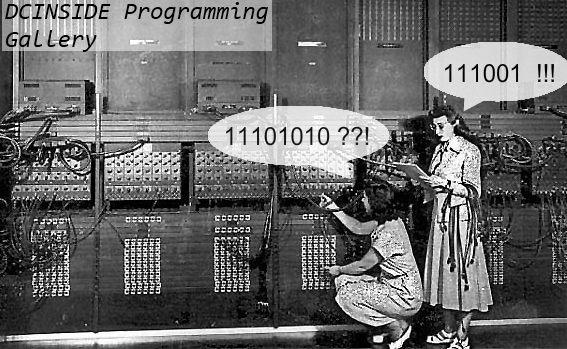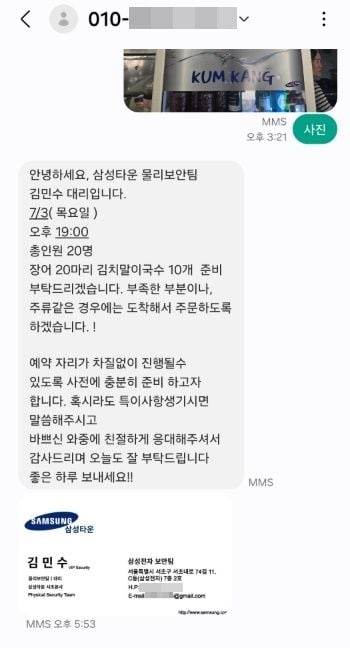Welcome to the March 7, 2014 edition of ACM TechNews, providing timely information for IT professionals three times a week.
ACM TechNews mobile apps are available for Android phones and tablets (clickhere) and for iPhones (click here) and iPads (click here).
HEADLINES AT A GLANCE
Stanford Will Start New Joint Computer Science Programs
Inside Higher Ed (03/07/14) Colleen Flaherty
Stanford University's Faculty Senate recently approved two new joint-major programs that will enable students to study English and computer science, or music and computer science, starting in the fall. Stanford professor Nicholas Jenkins says the joint-major program, called CS+X, is expected to attract humanists who want a competitive edge on the job market, computer science-minded students who want to be engaged in the humanities, and digital natives for whom computer science and the humanities do not seem "at opposite ends of the spectrum at all, but continuous." Stanford professor Jennifer Widom notes computer science is the university's most popular undergraduate program, as the number of students studying computer science has more than tripled in the last five years. Widom says the joint majors should benefit even the most computer science-minded graduates, since technology firms often say they prefer candidates with a grounding in the humanities. Students majoring in CS+X will have to take two fewer courses in computer science than traditional computer science majors, and about the same in a humanities program. The Faculty Senate also recently approved a six-year, joint-program initiative that enables joint majors in programs other than computer science.
Designing Robots That Can Keep Secrets
University of Oxford (03/05/14)
University of Oxford researchers are investigating the privacy concerns associated with surrogate robots and are studying ways to prevent them from unnecessarily revealing the identities of the people with whom they interact. "It is important that we design robots that have privacy embedded into their design, so their information gathering is restricted to what is needed to interact and carry out their tasks, and information about the identity of their human users is kept to a minimum," says Ian Brown, associate director of Oxford's Cyber Security Center and a senior research fellow at the Oxford Internet Institute. Brown and Oxford colleague Joss Wright are part of a team of researchers working on a three-year project examining the implications of robots in public spaces. As part of the project, the researchers plan to introduce an advanced-programmed humanoid robot, called Nao, to the public and then measure how people respond to it. "At Oxford we have been exploring how individuals can maintain control over information about themselves, while still enjoying the potential benefits of robotic technology," Brown says. The researchers have developed techniques for providing information without compromising users' privacy, including matching people into groups with similar interests without needing each person to share their interests.
U.S. Funding for Key IT Research Programs Could Be Slashed
IDG News Service (03/05/14) Agam Shah
Research programs for robots and sensors used in warfare likely will be among the winners in the White House's budget proposal for the U.S. Defense Advanced Research Projects Agency (DARPA) for fiscal year 2015. The network-centric warfare technology program is the single largest budget item at $386.9 million, and the sensor technology program also has received a funding boost to $312.8 million. The former program concentrates on the development of networking, robotics, and other technology in naval systems to minimize damage and boost battlefield efficiency. Meanwhile, the budget for DARPA's Information and Communications Technology program will fall from $399.6 million in fiscal 2014 to $334 million. The budget for electronics technology will decline from $233.47 million to $179.2 million, and the budget also is being reduced for new materials and manufacturing technologies for nanoscale chips. DARPA's Cognitive Computing Systems research program also has no budget this year after receiving about $16 million last year. The research is key to the effort to create brain-like chips for cognitive computing systems and software with the ability to adapt to neural networks. Overall, the requested budget for DARPA increased slightly to $2.9 billion from $2.79 billion.
Social Physics
MIT News (03/04/14) Larry Hardesty
Massachusetts Institute of Technology Media Lab Human Dynamics Laboratory director Alex Pentland has written "Social Physics: How Good Ideas Spread--the Lessons from a New Science," a book that ties the lab's various research efforts into a new theory of human social interaction. The book applies this theory to questions of organizational management, urban planning, and digital privacy. Abundant mobile-sensor data, new mathematical tools for analyzing network interdependencies, and powerful new computers offer the possibility of bringing quantitative rigor to sociology, or "social physics," according to Pentland. "We have enough data to take all of these theories about people and innovation and good decision-making and make them quantitative," Pentland says. "And when you do that, you find that there are some reasonably simple principles that account for 80, 90 percent of the variance in some cases." These principles pertain to the interaction between two types of information propagation, called "exploring" and "engagement." Exploring represents exposure to novel ideas, while engagement refers to in-person social interactions. Pentland says engagement remains the predominant means through which an idea takes hold in a community. He says the Human Dynamics Laboratory has repeatedly seen the importance of balancing exploration and engagement in its research, and is studying how to harness these effects.
U.S. Intelligence Group Wants Software to Decide Who Is Trustworthy
Network World (03/05/14) Michael Cooney
The U.S. Intelligence Advanced Research Project Activity (IARPA) recently announced the Investigating Novel Statistical Techniques to Identify Neurophysiological Correlates of Trustworthiness (INSTINCT) Challenge, a software competition to develop an algorithm that identifies and extracts such signals from data recorded while volunteers engaged in various types of trust activities. The INSTINCT Challenge calls on the public to develop algorithms that improve predictions of trustworthiness, using neural, physiological, and behavioral data recorded during experiments in which volunteers made high-stakes promises and chose whether or not to keep them. IARPA says the INSTINCT project particularly wants to develop algorithms that can detect, measure, and validate "useful" trustworthy signals in order to more accurately assess another's trustworthiness in a particular context. As part of the challenge, competitors will have access to a series of recent IARPA research studies in which voluntary participants interacted with other volunteers while completing several tasks that required each of them to assess the other's trustworthiness. "Neural, psychological, and physiological data were collected in parallel with these tasks, with participants' behavior serving as ground truth," IARPA notes. The agency hopes the challenge will produce innovative algorithms and analyses that use data from one participant in order to predict whether that participant's task partners will act in a trustworthy manner.
The Future of Wikipedia: WikiPeaks?
The Economist (03/01/14)
Wikipedia has become the Web's fifth most popular site and a paragon of crowdsourcing's potential since its inception in 2001, but the user-generated encyclopedia faces several challenges as it looks to the future. With editions in 287 languages, Wikipedia draws 15 percent of total Internet users on any given day, or 495 million readers monthly. The nonprofit Wikimedia Foundation oversees Wikipedia with about 170 employees, but a community of more than 76,000 volunteer editors is largely responsible for the site's content. Despite its success, Wikipedia is struggling with securing its financial future, rebalancing its content, and determining how to attract enough qualified contributors. Wikimedia Foundation executive director Sue Gardner has improved Wikipedia's finances since she started in 2007, securing $50 million in donations and grants last year. However, the nonprofit in March plans to name a new leader, who will have to determine whether to establish an endowment to ensure future financial stability. Finding and retaining contributors is another difficulty, as the number of editors for the English-language version has dropped by a third over the past seven years. In addition, Wikipedia is seeking more diverse writers, because contributors are currently 90 percent male and primarily from wealthy countries. Wikipedia also must keep pace with changing technology, and is considering ways to facilitate editing on mobile devices.
Open Source Challenges a Proprietary Internet of Things
Computerworld (03/04/14) Patrick Thibodeau
Without interoperability, consumer devices, electronic appliances, and sensor-equipped wearables will not recognize each other and communicate. Although there is no consumer electronics vendor large enough to force interoperability between all devices, there are vendors large enough to frustrate the path to it by building an Internet of Things mostly around their products. However, the open source industry believes it has the method, the process, and the influence to drive the electronics industry toward true interoperability. The Linux Foundation recently created the AllSeen Alliance, which combines the AllJoyn Framework with its open source network. The C++ code supports the major operating systems, chipsets, and embedded variants. Having the C++ code available will deliver the network effect and propel device interoperability, says Linux Foundation executive director Jim Zemlin. However, what is missing in Linux Foundation's effort is the support of the mega-vendors such as Samsung and Apple, according to Enderle Group analyst Rob Enderle. He says such dominant vendors typically frown on open source because it enables others to penetrate their markets. "Open source has an important role to play, and the earlier that's acknowledged and facilitated, I think that's better for everyone," says consultant Andrew Aitken.
Radboud Professor Invents Magnet for Fast and Cheap Data Storage
Radboud University Nijmegen (03/03/14)
Optical data storage does not require expensive magnetic materials and works just as well as synthetic alternatives, according to Radboud University Nijmegen researchers. They say optical switching is only possible in special magnets, called ferrimagnets, which are made of expensive rare-earth metals that are difficult to produce at nano-scale. "Now, we have shown for the first time that it is also possible to switch synthetic ferrimagnets optically," says Radboud professor Theo Rasing. He says ferrimagnets have an unusual property in that their spins are not all of the same magnitude, which gives them a net magnetic moment. "It is therefore possible to create a net magnetic moment by combining two layers of different thicknesses and opposing magnetization directions, for example," Rasing says. "Coupling the spins works in a very similar manner, in the same two-step process that we previously developed for the normal ferrimagnets." He notes the production of synthetic ferrimagnets does not require the use of rare-earth metals, which makes them less expensive and better for the environment, and therefore more suitable for use in computers. "I really believe that this is the start of a fundamentally new form of data storage, and possibly data processing too," Rasing says.
Mathematical Proof Reveals How to Make the Internet More Earthquake-Proof
Technology Review (03/03/14)
Integral geometry can be used to make the spatial layout of the Internet more resistant to damage from an earthquake, according to Hiroshi Saito at NTT's Network Technology Laboratories. Saito's process involves first envisioning a network containing a finite area in which a disaster occurs, and the nodes within this area then have a certain probability of failing. The challenge is optimizing the nodes' organization to minimize the probability they will cross a disaster area, should one happen. One rule of thumb yielded from this approach is routes that form shorter zigzags reduce the probability a network intersects a disaster area. A second rule is if the network forms a ring, then additional routes within the ring cannot lower the likelihood that all the routes between a pair of nodes intersect the disaster area. Saito tested the ideas with intensity data from real earthquakes in Japan, superimposing various networks on the data to see how they would fare. The results showed the theoretical rules of thumb should function just as well in the real world as they do in theory. Engineers design networks with protection from damage in mind and then relatively easy restoration should they become damaged, but Saito's approach is to try to miss the disaster completely, if possible.
Georgia Joins Fellowship to Bolster STEM Teacher Education
Atlanta Journal-Constitution (03/03/14) Maureen Downey
Georgia will participate in the Woodrow Wilson Teaching Fellowship Program, a national initiative that seeks to increase the number of teachers with backgrounds in science, technology, engineering, and mathematics at the secondary-school level. Columbus State University, Georgia State University, Kennesaw State University, Mercer University, and Piedmont College will develop a model master's-level teacher preparation program that offers fellows a year-long experience in local school classrooms. The institutions will receive $400,000 in matching grants to develop programs based on standards set by the Woodrow Wilson Foundation. Fellows will receive $30,000 stipends to use during the master's program, and they must commit to teach in a high-need urban or rural school in the state for three years, with ongoing mentoring. Current project funding is $9.36 million, but the foundation is looking for more partners and money. For each of the program's three years, participating colleges and universities will be able to enroll 12 fellows, for a total of 180 fellows. The first fellows will be selected in spring 2015, start academic programs in fall 2015, and will be ready to teach in fall 2016.
S&T Computer Engineer Patents Quantum Computing Device
Missouri S&T News (02/28/14) Mary Helen Stoltz
A Missouri University of Science and Technology (Missouri S&T) researcher has patented a quantum processor capable of parallel computing that uses no transistors. Missouri S&T professor C.H. Wu says the device could replace current electronic computing systems and provide quantum computing capabilities. In total, the quantum processor replaces 24 transistors, using symbolic substitution rules instead of logic gates. "Quantum computing based on what I have developed is a viable alternative and I believe it is the only one of its kind available," says Wu. He says if several of the new devices are wired together, it will form a cellular automaton capable of performing computation without the use of transistors as required in current computing systems, which will allow for much smaller processor chips and great increases in processing speed. In addition, Wu says the processor is rule-based and can distinguish left and right in spatial relations on grids. "Even if some scientists had looked for cellular automata with the correct two-bit-per-cell size, the search for the correct set of rules for computing is like finding a needle in a haystack because there are more than a billion possible sets of rules and only one of them works for computing," Wu says.
Stanford Engineers Create a Software Tool to Reduce the Cost of Cloud Computing
Stanford Report (CA) (02/28/14) Tom Abate
Stanford University professor Christos Kozyrakis and doctoral student Christina Delimitrou have developed Quasar, a cluster management system they say can triple server efficiency and provide reliable service at all times, thereby reducing data center operating expenses. Data centers run applications such as search services for consumers or data analysis for businesses, placing varying demands on the data center and using different amounts of server capacity. Cluster management tools apportion the workload and assign applications to specific servers, based on input from software developers about the capacity the applications will require. Developers often overestimate when reserving server capacity, with the cumulative impact leading to significant excess capacity. Quasar begins by asking about the performance that applications require, then ensures adequate server capacity to meet various requirements. "We want to switch from a reservation-based cluster management to a performance-based allocation of data center resources," Kozyrakis says. Quasar uses an algorithm similar to popular movie and book recommendation algorithms to suggest the minimum number of servers for each application and which applications can run together most effectively. Boosting data center efficiency will be essential for the growth of cloud computing, because electricity demands that threaten to overwhelm power plants preclude the option of continually adding servers.
The First Woman to Get a Ph.D. in Computer Science From MIT
The Atlantic (03/05/14) Rebecca J. Rosen
Irene Greif, who in 1975 became the first woman to receive a Ph.D. in computer science from the Massachusetts Institute of Technology, founded the research field of computer-supported cooperative work (CSCW). Recently retired from IBM, Greif now wants to encourage young women to pursue science, technology, engineering, and mathematics (STEM) careers. As a researcher, Greif says she "moved from these very mathematically oriented computer science areas to much more people-oriented work--office automation and human-computer interface and so on." In the 1980s, she launched the CSCW field, which she describes as "getting a set of people together across disciplines who would look at social systems and computer systems at the same time." Working in office automation, Greif says she learned that making processes too invisible can damage the social aspects that help advance work. "And that was really the beginning of the notion of who needed to be talking to each other among researchers, in order to really get things right around using computers to help people work together," Greif says. She believes female role models are beneficial to women entering STEM fields, and stresses that women should be visible at by-invitation conferences and panel sessions.
Abstract News © Copyright 2014 INFORMATION, INC.

매일 정기적으로 오는 ACM 메일 특별히 복붙해주마










댓글 영역
획득법
① NFT 발행
작성한 게시물을 NFT로 발행하면 일주일 동안 사용할 수 있습니다. (최초 1회)
② NFT 구매
다른 이용자의 NFT를 구매하면 한 달 동안 사용할 수 있습니다. (구매 시마다 갱신)
사용법
디시콘에서지갑연결시 바로 사용 가능합니다.